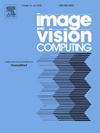Image re-identification: Where self-supervision meets vision-language learning
IF 4.2
3区 计算机科学
Q2 COMPUTER SCIENCE, ARTIFICIAL INTELLIGENCE
引用次数: 0
Abstract
Recently, large-scale vision-language pre-trained models like CLIP have shown impressive performance in image re-identification (ReID). In this work, we explore whether self-supervision can aid in the use of CLIP for image ReID tasks. Specifically, we propose SVLL-ReID, the first attempt to integrate self-supervision and pre-trained CLIP via two training stages to facilitate the image ReID. We observe that: (1) incorporating language self-supervision in the first training stage can make the learnable text prompts more identity-specific, and (2) incorporating vision self-supervision in the second training stage can make the image features learned by the image encoder more discriminative. These observations imply that: (1) the text prompt learning in the first stage can benefit from the language self-supervision, and (2) the image feature learning in the second stage can benefit from the vision self-supervision. These benefits jointly facilitate the performance gain of the proposed SVLL-ReID. By conducting experiments on six image ReID benchmark datasets without any concrete text labels, we find that the proposed SVLL-ReID achieves the overall best performances compared with state-of-the-arts. Codes will be publicly available at https://github.com/BinWangGzhu/SVLL-ReID.
求助全文
约1分钟内获得全文
求助全文
来源期刊

Image and Vision Computing
工程技术-工程:电子与电气
CiteScore
8.50
自引率
8.50%
发文量
143
审稿时长
7.8 months
期刊介绍:
Image and Vision Computing has as a primary aim the provision of an effective medium of interchange for the results of high quality theoretical and applied research fundamental to all aspects of image interpretation and computer vision. The journal publishes work that proposes new image interpretation and computer vision methodology or addresses the application of such methods to real world scenes. It seeks to strengthen a deeper understanding in the discipline by encouraging the quantitative comparison and performance evaluation of the proposed methodology. The coverage includes: image interpretation, scene modelling, object recognition and tracking, shape analysis, monitoring and surveillance, active vision and robotic systems, SLAM, biologically-inspired computer vision, motion analysis, stereo vision, document image understanding, character and handwritten text recognition, face and gesture recognition, biometrics, vision-based human-computer interaction, human activity and behavior understanding, data fusion from multiple sensor inputs, image databases.
 求助内容:
求助内容: 应助结果提醒方式:
应助结果提醒方式:


